In 2021, the United Nations General Assembly proclaimed 10th as International Day of Argania to promote the argan tree as an pillar of a rich heritage and ancestral source of resilient and sustainable development.
Don't wanna be here? Send us removal request.
Text
The multifaceted argan tree.
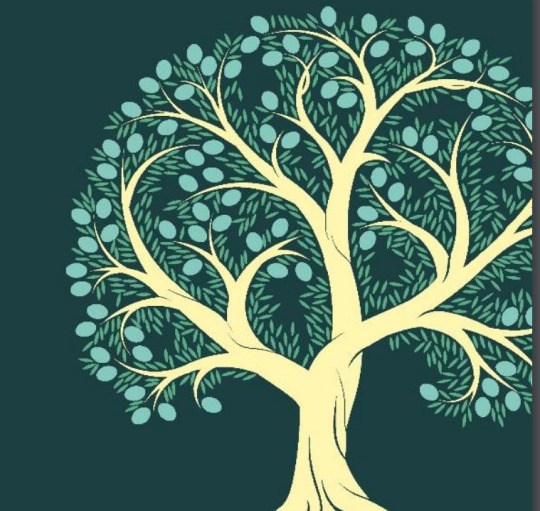
The argan tree (Argania spinosa) is a native species of the sub-Saharan region of Morocco, in the southwest of the country, which grows in arid and semiarid areas. It’s the defining species of a woodland ecosystem, also known as Arganeraie, which is rich in endemic flora. It is resilient to a harsh environment under water scarcity, risk of erosion and poor soils.
This ecosystem of extraordinary beauty is not only important in terms of conservation, but also for research and socio-economic development, due to its forestry, agricultural and livestock use.
The argan tree woodlands provide forest products, fruits and fodder. The leaves and the fruits are edible and highly appreciated, as is the undergrowth, and constitute a vital fodder reserve for all herds, even in periods of drought. The trees are also used as fuelwood for cooking and heating.
The world-renowned argan oil is extracted from the seeds and has multiple applications, especially in traditional and complementary medicine and in the culinary and cosmetic industries.
#argania spinosa#arganeraie#endemic flora#woodlands#forest products#edible fruit#edible leaves#fodder reserve#fuelwood#argan oil#araganeraie seeds#traditional and complementary medicine#culinary and cosmetic industries#argan ecosystem#sub-Saharan region of Morocco#arid and semiarid areas
0 notes
Text
May 10th as International Day of Argania.

This unique region, where argan trees have been cultivated for centuries combines agricultural biodiversity, resilient ecosystems and valuable cultural heritage. For that reason, it has gotten recognition and protection from various UN entities.
The United Nations Educational Scientific and Cultural Organization (UNESCO) designated in 1988 the endemic production area as the Arganeraie Biosphere Reserve. Also, all know-how concerning the argan tree was inscribed in 2014 on the UNESCO Representative List of the Intangible Cultural Heritage of Humanity.
Moreover, in December 2018, FAO recognized the Argan-based agro-sylvo-pastoral system within the area of Ait Souab - Ait Mansour in Morocco as a Globally Important Agricultural Heritage System.
And lastly, in 2021, the United Nations General Assembly proclaimed 10 May the International Day of Argania. The resolution, submitted by Morocco, was co-sponsored by 113 member states of the United Nations and adopted by consensus.
#Arganeraie Biosphere Reserve#10 may#ARGANIA#International day of Argania#united nations general assemly#agro-sylvo-pastoral system#Argan-based#agricultural biodiversity#resilient ecosystems#sustainable cultivation practices#cultivating#United Nations Educational Scientific and Cultural Organization (UNESCO)#argan forest#argan ecosystem#argania tree#argan species#argan tree
0 notes
Text
The Argan Tree facing the challenges of climate change.
The theme of this year's International Day of Argania is "The Argan Tree facing the challenges of climate change", The day aims to highlight the challenges facing the ecosystem and the role of the Argania tree in strengthening sustainable development and environmental conservation efforts. It is also an opportunity to promote efforts that empower communities and rural women through the support and promotion of cooperatives and agricultural organizations.
Objectives of the event:
The 4th edition of the international celebration of the Argan tree aims to:
1. Promote greater understanding of the argan ecosystem and species response to climate change and their potential role in mitigation and adaptation.
2. Highlight the importance of its preservation, this serves as a cornerstone for cultivating sustainable practices that enhance the long-term well-being of both the environment and the communities dependent on the argan tree.
3. Promote the adoption of biodiversity preservation and climate change mitigation policies that integrate the protection of the argan tree.
4. Strengthening international partnerships and promoting cooperation to support initiatives for the conservation of the argan forest
Watch the panel discussion entitled the Argan Tree facing the challenges of climate change - International Day of Argania 2024!

#Argania tree#rural women#environmental conservation#cooperatives and agricultural organizations#sustainable development#climate change mitigation#international partnerships#argan forest#argan tree#cultivating#sustainable cultivation practices#argan species#argan ecosystem#10 May
0 notes
Text
Promote the Argan tree as a pillar of a rich heritage and an ancestral source of resilient and sustainable development.
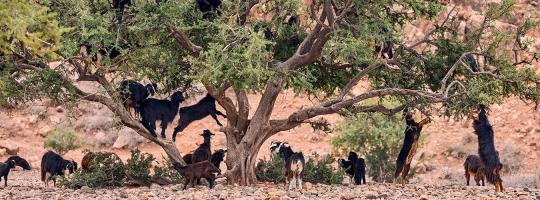
Local communities make oil and other products from argan trees, farm on the land around the trees, and rear goats who scale the short trees and eat argan nuts. United Nations on International Day of Argania.
#traditional and complementary medicine#cooperatives and agricultural organizations#desert mountainscapes#sustainable development#edible leaves#argan ecosystem#sub saharan region of morocco#resilient ecosystems#fodder reserve#argania tree#forest products#arid and semiarid areas
0 notes
Text
Socio-economic development & sustainability of the Argan ecosystem.
The United Nations will celebrate the third International Day of Argania, under the theme: "Socio-economic development & sustainability of the Argan ecosystem." The celebration will aim to share knowledge and practices from the Argan production sector, in support of food security and sustainable production and consumption patterns. Follow the event on UN Web TV on 10 May, 3:00 pm EST
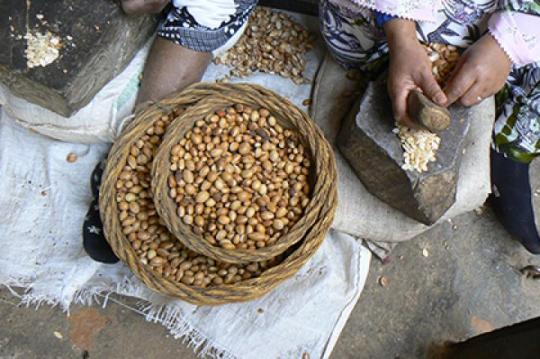
#argan tree#araganeraie seeds#argan forest#argania#argania tree#argan oil#10 may#sustainable cultivation practices#sustainable development#argan ecosystem#resilient ecosystems#sdg12#Sustainable consumption#sustainable products
0 notes
Text
What is argan oil?
Argan oil is one of the rarest oils in the world and is hailed as the "liquid gold" of Morocco. It has multiple uses in cooking, medicines and cosmetics. Its ability to prevent cardiovascular diseases and its benefits for the skin are scientifically recognized. Rural women lead the entire extraction process through knowledge transmitted from one generation to the next.
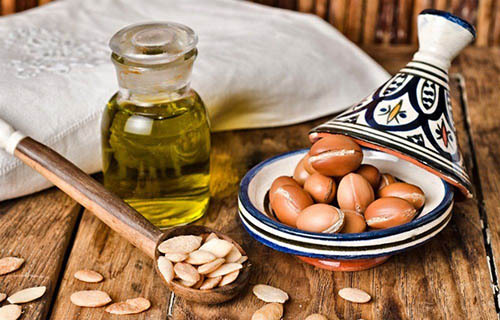
#liquid gold#argan oil#araganeraie seeds#traditional and complementary medicine#culinary and cosmetic industries#argania#international day of argania#10 may
0 notes
Text
How argan oil is made?
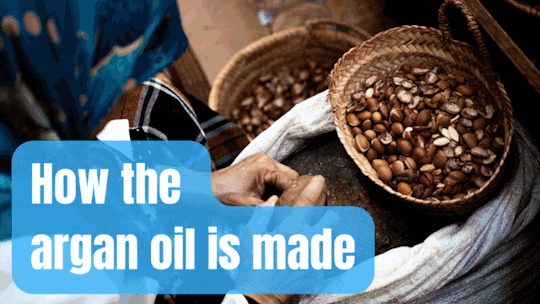
Follow the step-by-step process of how argan oil is made.
Did you know?
The argan tree withstands temperatures of up to 50° Celsius.
The argan trees are a true bastion against desertification, which can reach 10 meters in height and can live for 200 years.
A symbol of eternity and resistance, the argan tree has a strong symbolic and emotional value for local communities.
Argan oil is given as a wedding gift and is used extensively in the preparation of festive dishes.
It takes about 150 kg of fruit to produce 3 litres of argan oil.
#argan oil#argania#araganeraie seeds#culinary and cosmetic industries#edible leaves#edible fruits#argania tree#argan tree#rural women#step-by-step process
0 notes
Text
The argan tree as a fundamental pillar for sustainable development.

The argan tree is typically a multipurpose tree that supports income generation, increases resilience and improves climate adaptation, playing a very important role in achieving the three dimensions of sustainable development - economic, social and environmental - at the local level.
The sustainable argan production sector contributes to the economic empowerment and financial inclusion of local communities, especially women living in rural areas. Cooperatives are instrumental in promoting local job opportunities and can play an important role in contributing to food security and in eradicating poverty.
For centuries, the argan tree has been a mainstay of the Berber and Arab-origin indigenous rural communities, which developed a specific culture and identity, sharing their traditional knowledge and skills through non-formal education, particularly the unique knowledge associated with the traditional production of argan oil by women.
The unique argan-based agro-forestry-pastoral system uses only locally adapted species and pastoralism activities and relies on traditional water management provided by the Matifiya - a rain water reservoir carved into rock, hence contributing to climate change mitigation and adaptation, and to the conservation of biodiversity. United Nations on International Day of Argania
#argan-based agro-forestry-pastoral systel#argania tree#argania#argan forest#argan ecosystem#argan tree#traditional water management#rain water reservoir#agricultural biodiversity#climate change mitigation#argan species#sustainable development#International Day of Argania#10 may
0 notes
Text
The Moroccan landscape, traditions and communities behind argan and its oil.

Despite its proximity to several spots along Morocco’s tourist trail, Chtouka Ait Baha’s empty desert mountainscapes are worlds away from the colorful, bustling streets of the country’s cities. However, the relatively remote area is home to the incredible argan tree, a treasure of Morocco that provides one of the country’s most valuable exports: argan oil. Food and Agricultural Organization (FAO)
#arid and semiarid areas#desert mountainscapes#argan forest#argania tree#argan tree#morocco#sustainable cultivation practices#cultivating#Food and Agricultural Organization (FAO)#International day of Argania#10 may
0 notes